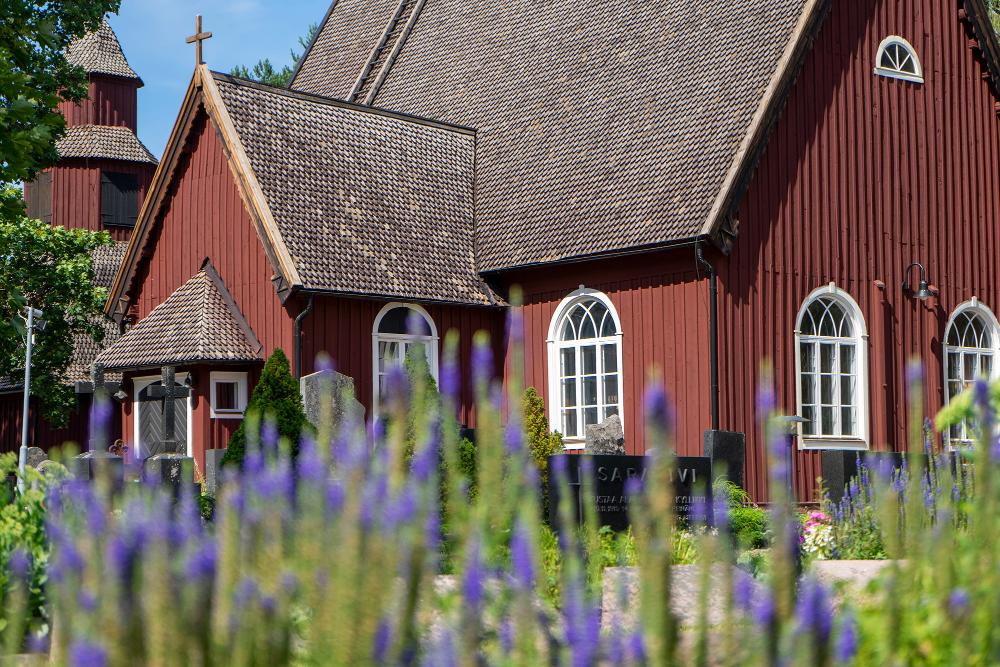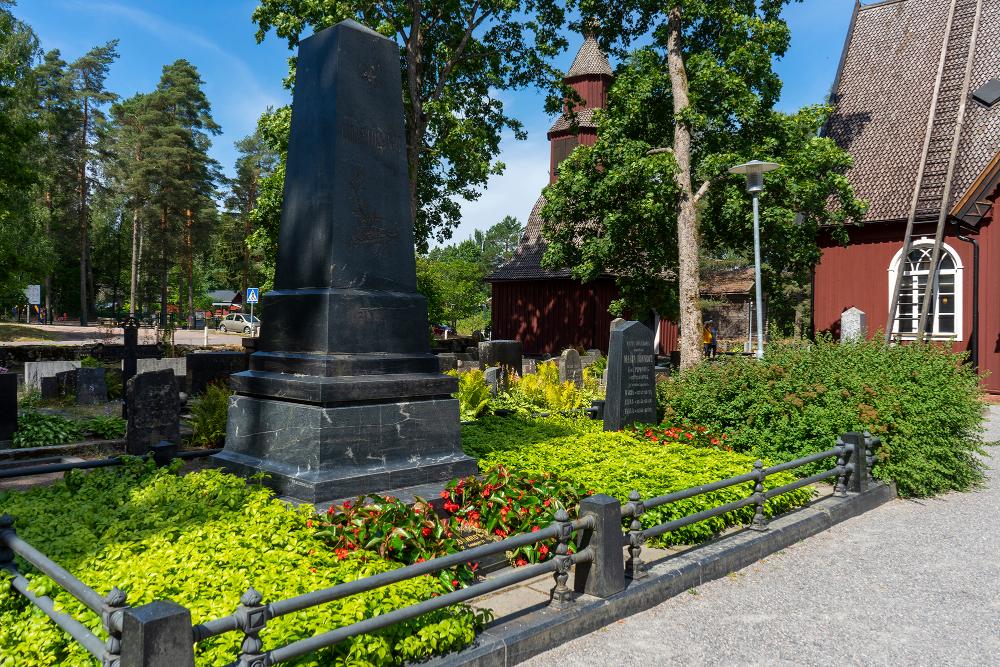Evästeet
EvästeetLinkki avautuu uudessa välilehdessä
Sammatti church is one of the oldest wooden churches in Finland that are used all year round. The church was constructed under the supervision of Mickel Göransson between 1754 and 1755.
During the 1660s Sammatti became a chapel parish of Karjalohja and already then Sammatti had its own church and graveyard. It's not known what happened to the earlier church. Current church in Sammatti is an example of modest, medieval-style, wooden churches of Southwestern Finland that were never ravaged by fire.
Next to the church is a separate bell tower which was built by Erik Stenström from Arvela house in 1763. The bell tower also houses a morgue. There are two bells in the tower; one from the year 1762 and the other from the year 1768.
Sammatti church has seats for 220 people and it’s surrounded by a beautiful graveyard.
The baroque-style pulpit in Sammatti church is from the earlier church. It was most likely made before the Thirty Years’ War (1618-1648). According to an old tradition the pulpit came to Sammatti as part of the spoils of war.
Two swords which have been veiled with mourning-veil are a part of the church interior. These swords are now held and preserved in the collections of the National Museum of Finland.
Organ in Sammatti church was made by organ factory Kangasala in 1968. The organ has 11 organ stops.
The altar painting in Sammatti church was painted by Adolf von Becker in 1883. The painting shows Christ standing on top of the Earth with a chalice in his hand. This altar painting was donated to the church by Elias Lönnrot after him losing his youngest daughter Tekla in 1879.
Elias Lönnrot, the creator of the Finnish national epic Kalevala, is buried in Sammatti graveyard. His gravestone shows a star representing Epiphany. Lönnrot made many psalms and most of them were psalms for Epiphany. The star also symbolises Lönnrot as one of the three wise men from the east as Lönnrot collected much of his work for the Kalevala from the Eastern Finland and Karelia. .
Lönnrot’s monument, which is also located in the Sammatti graveyard, can’t be missed. It’s a large obelisk with a Kantele, a traditional Finnish instrument. Lönnrot collected the tradition of building the Kantele and created a model for a concert Kantele. This monument was erected by the Finnish Literature Society.
Burying people under the church floor was common practise during the middle ages until the year 1785 when it was prohibited due to health reasons. In Sammatti, the deceased were still buried under the church floor for 40 years after the prohibition. It was not until then that the current graveyard next to Sammatti church was taken in use.


EvästeetLinkki avautuu uudessa välilehdessä